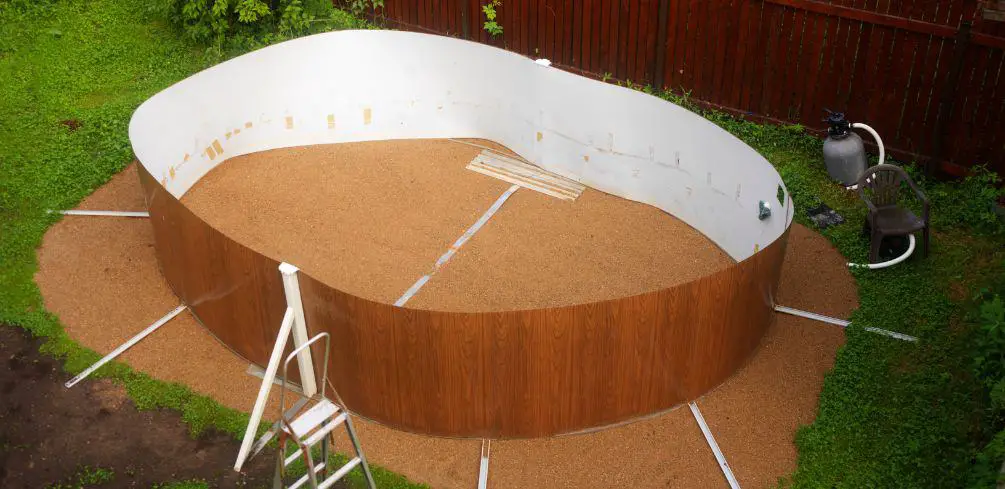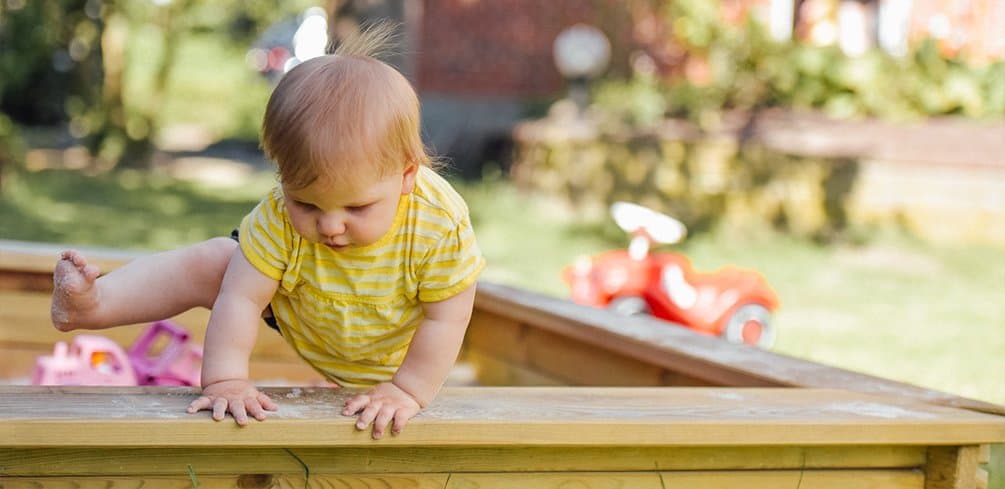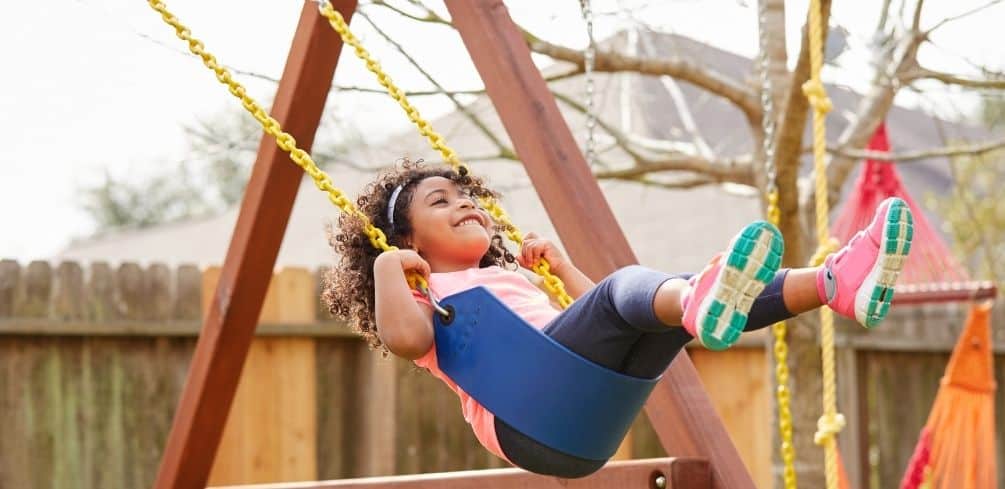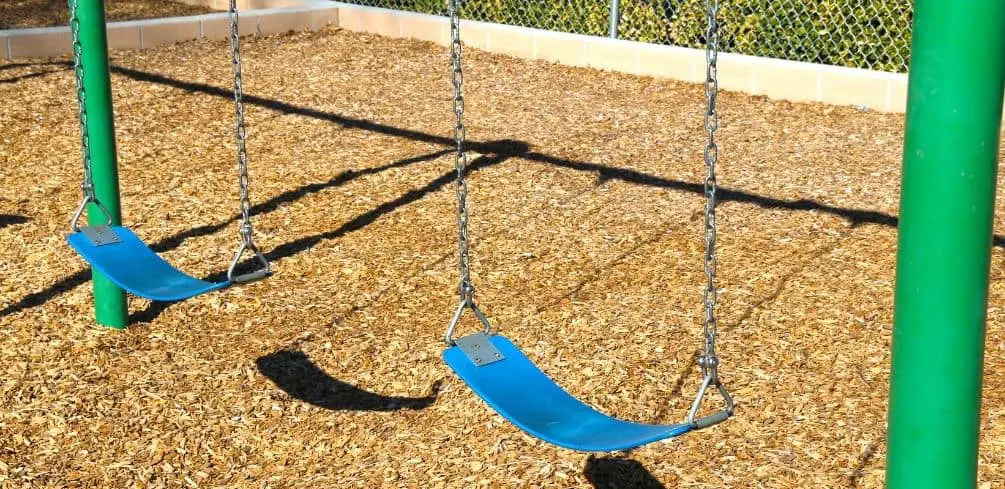Are you considering replacing the sand beneath your swimming pool? It’s an important decision, as the material beneath your pool affects its stability, safety and comfort.
Fortunately, there are alternatives to sand that offer improved protection from ground erosion, better drainage and a longer lifespan for your pool. But with so many options available, it can be difficult to decide which one is best for you.
In this article, we’ll take a look at 8 alternatives to sand under pools that provide increased safety and durability for all kinds of swimming pools. Read on to learn more about the benefits of each option and make an informed decision about the best choice for your swimming pool!
Artificial Grass
As an oasis of safety in our homes, pools are often seen as a place to retreat and relax. Looking for alternatives to sand under your pool is a great way to create an even more safe and more secure environment while still maintaining the look and feel you desire.
Artificial grass mats, fake grass carpets, artificial turf rolls, synthetic grass patches, and lawn turf rolls are all great options to offer a comfortable and aesthetically pleasing area surrounding your pool.
When installing real grass around your pool, it can often be difficult to maintain and keep looking neat, given its proximity to water. Artificial grass, on the other hand, is built with resilience in mind; it’s not affected by moisture or humidity, so you don’t have to worry about soggy patches or mud puddles.
In addition, it requires little maintenance compared to real grass, which means you can spend more time in the pool instead of mowing the lawn!
Finally, artificial grass offers a variety of colors and styles that allow you to customize your outdoor space just the way you want it. From natural green hues to vibrant blues or reds – there’s something for everyone! With these options, you can create a unique look that will make your backyard stand out from the rest without worrying about upkeep or damage from water.
Rubber Mulch
Moving on from artificial grass, another great alternative to sand under a pool is rubber mulch. Rubber mulch is made from recycled tires and provides cushioning for children playing in the pool area. It’s softer than traditional playground mulch and provides a safe surface for kids to play on.
Rubber mulch comes in various shapes and sizes, including rubber chips, rubberized mulch, and rubber nuggets. The material is easy to maintain and can be used for many years without needing to be replaced. Plus, since it’s made from recycled tires, it helps reduce the amount of waste going into landfills.
Rubber mulch also has excellent drainage properties that make it ideal for a pool environment. It won’t become water-logged or float away as sand would in a pool setting. This makes rubber mulch an attractive option for those wanting an alternative to sand under their pool.
Overall, rubber mulch provides a great solution that is both safe and environmentally friendly. Its cushiony nature helps keep kids safe while playing in the pool area but still offers good drainage properties that are necessary for a successful pool setup.
Decorative Stones And Pebbles
Do you ever wonder why people bother with sand around their pool? After all, it’s a pain to keep clean and can be easily swept away by heavy rain. Well, if you’re looking for something more attractive, decorative stones and pebbles may just be your answer!
Here are 3 great ways to liven up the area around your pool with decorative stones and pebbles:
- River rocks: River rocks come in a variety of colors and sizes, making them perfect for creating eye-catching designs around your pool. They also provide excellent traction so that no one slips on the wet surface.
- Crushed granite: If you want a modern touch to your pool area, crushed granite is the answer. The beautiful mixture of colors creates an elegant look while providing ample drainage for water runoff.
- Gravel paths: Gravel paths give your backyard an inviting feel while providing the perfect avenue for keeping sand away from the pool. Plus, they are easy to maintain and can last for years.
Decorative stones and pebbles are a great way to add beauty and safety to your pool area without having to worry about pesky sand getting in the way. Whether you choose river rocks, crushed granite, or gravel paths, these materials can bring life to any outdoor space while ensuring everyone’s safety at all times!
Rubber Tiles And Interlocking Mats
Switching from decorative stones and pebbles to rubber tiles and interlocking mats for under a swimming pool or playground area is a great way to provide a safe, slip-resistant surface. Rubber tiles are an easy-to-install option that is versatile and durable, making them ideal for both indoor and outdoor use.
Not only do they offer superior shock absorption, but they also come in a variety of colors and designs that can be used to create an aesthetically pleasing look.
Interlocking mats are another excellent choice when considering flooring options for your swimming pool or playground area. Made from a recycled rubber material, these mats are designed with anti-slip features to offer superior safety.
They are also highly resistant to weather damage, so you won’t have to worry about them deteriorating over time. Plus, their modular design makes them easy to install and replace if needed.
If you’re looking for an alternative to sand under your pool or playground area, rubber tiles, and interlocking mats provide the perfect solution. Both options offer superior shock absorption while providing a safe environment for people of all ages.
With their durability and ease of installation, these products can help make sure that your space remains attractive while ensuring everyone’s safety.
Wood Chips Or Shavings
Wood chips or shavings are other possible alternatives to sand under a pool. These materials are often available at garden stores and, in some cases, can be purchased from pet supply stores.
The type of wood chips or shavings used will depend on the desired result in terms of drainage and aesthetics.
| Type | Description | Pros & Cons |
|---|---|---|
| Cedar Chips | Smaller than other wood chips, cedar chips offer good drainage and have an attractive reddish-brown color. They are also naturally insect-resistant. However, they can be expensive and may need to be replaced frequently due to their small size. | Pros: Good drainage; Attractive; Insect-resistant Cons: Expensive; Shorter lifespan |
| Pine Shavings | Pine shavings are larger than cedar chips but still provide decent drainage. They come in both softwood and hardwood varieties, with softwood having a more natural appearance. Hardwood is usually denser and provides better insulation for the pool floor, but it is more expensive. | Pros: Decent drainage; Variety Cons: Softwood variety may not last long; Hardwood variety is expensive |
| Sawdust Chips | These are the smallest type of wood chips or shavings available and can provide excellent drainage. They tend to settle into gaps between paving stones or crevices in concrete surfaces better than other types of wood chips or shavings, making them ideal for uneven surfaces near pools. However, sawdust chips may require frequent replacement as they break down quickly in water environments. | Pros: Excellent drainage; Can settle into gaps/crevices Cons: Require frequent replacement; Break down quickly in water environments |
It’s important to consider all the pros and cons when choosing which type of wood chip or shaving to use under a pool. Consider the amount of maintenance that each type requires before deciding which one is best suited for your needs.
With proper installation and regular maintenance, any of these options could work well for your pool area.
Foam Mats
Transitioning from the previous section, another alternative to sand under a pool is foam mats. Foam mats offer many advantages for use underneath a pool.
One advantage is that foam mats are lightweight and easy to install, making them an ideal choice for those who are looking for a quick, straightforward installation solution. They also come in a variety of sizes and shapes, allowing you to customize your pool installation according to your individual needs.
Foam mats provide additional benefits, such as being soft and comfortable underfoot. This makes them great for providing cushioning so that people don’t have to worry about hard surfaces or sharp objects when they’re in the water.
Additionally, foam mats can reduce slipping hazards, which is especially important near pools where people often walk around barefoot.
Finally, foam mats are also resistant to mold and mildew growth, making them an ideal option for outdoor installations where moisture may be present. This means that you won’t have to worry about replacing your foam matting due to mold or mildew damage over time. With their long-lasting durability and easy maintenance requirements, foam pool mats offer an effective and safe solution for any pool installation project.
Frequently Asked Questions
How Much Does It Cost To Install An Alternative To Sand Under A Pool?
When it comes to your pool, a great alternative to sand is important for its safety and longevity. But how much does it cost to install an alternative to sand under a pool?
We’ll explore the installation costs of various pool sand alternatives, provide a price comparison of different alternatives, as well as offer some tips on where you can find a good pricing guide.
In terms of the cost of installation, several factors can influence the overall price. Some of these include the type of material used in the installation (e.g., rubber matting or gravel), the size of the area being covered, and any additional labor required to complete the job. Here is a breakdown of some common pool sand alternatives and their associated installation costs:
- Rubber Matting: This option is often one of the most affordable because it requires minimal labor and can be installed relatively quickly. The cost typically ranges from $2-$3 per square foot, making it an economical option for many people.
- Gravel: Gravel is also an economical choice for those looking for an alternative to sand under their pool. It’s easy to install and only requires minimal labor, making it a great choice if you’re looking for a quick solution. The average cost for this option is usually around $4-$5 per square foot.
- Synthetic Turf: If you’re looking for something more aesthetically pleasing than gravel or rubber matting, synthetic turf is another great option. It has a much lower installation cost than other materials, usually ranging from $1-$2 per square foot, depending on quality and size.
When selecting an alternative material for your pool’s bottom surface, be sure to compare prices between different suppliers and read customer reviews before making your purchase.
Additionally, there are plenty of online resources available that can help you find the best prices on various pool sand alternatives and provide helpful pricing guides along with detailed instructions on proper installation procedures.
What Are The Long-Term Maintenance Requirements Of Each Alternative?
When it comes to pool installation, the cost of long-term maintenance is often overlooked. According to research, pool owners can save up to 25% on their annual maintenance costs by choosing an alternative to sand under pools instead.
Choosing the right alternative for pool maintenance requires careful consideration of a few factors. The most important factor is the long-term maintenance requirements associated with each option.
These requirements can vary greatly depending on the material used and the climate in which it is used. For example, some materials require regular cleaning and resealing, while others may need replacement more frequently.
It’s important to consider all of your options carefully when selecting an alternative to sand under pools. In addition to researching the long-term maintenance requirements, you also need to compare prices and weigh potential benefits against any additional costs or risks associated with each option.
This can help ensure that you select a sand alternative that meets your budget and provides reliable protection for years to come.
By investing in high-quality materials and taking steps to maintain them properly, you can significantly reduce your overall pool installation costs while ensuring optimal performance and safety for your family and guests.
Are There Any Safety Considerations To Consider When Using An Alternative To Sand Under A Pool?
Safety is a primary concern when installing a pool. While sand might be the traditional material used to line the bottom of a pool, several alternatives can be used for this purpose.
However, it is important to consider any safety considerations associated with these alternatives before making a decision. This article will discuss the potential safety considerations for using an alternative to sand under a pool as well as the long-term maintenance requirements for each option.
When looking at alternatives to sand, it is important to consider how they may impact pool safety. For instance, some of these options could create cracks or gaps in which small children or pets can slip through and become injured or trapped.
Additionally, some materials may require more frequent cleaning than others due to their tendency to collect dirt and debris. Ultimately, any option should be chosen based on its ability to provide appropriate protection and minimize the risk of injury or harm.
When selecting an alternative to sand for use under a pool, long-term maintenance must also be factored into the decision-making process. Different materials have varying levels of durability and resistance to wear and tear from weathering or chemical treatments such as chlorine and other sanitizing agents used in pools.
It’s important to review product information to determine how often an alternative will need replacing and what kind of maintenance it requires in order to maintain its effectiveness over time.
Ultimately, choosing an alternative material under your pool should take into account both safety considerations and long-term maintenance requirements in order to ensure that your family enjoys many years of fun in the water without any additional stress or worry about risks associated with the wrong choice of material.
By doing your research ahead of time you can confidently select an option that best meets your needs while providing maximum protection against potential hazards around your swimming area.
Is It Possible To Use A Combination Of Different Alternatives Under A Pool?
When it comes to pool installation, using sand as the base can be an effective solution, but there are other alternatives. Combination options raise the question of whether it’s possible to use a combination of different alternatives under a pool.
What would be the benefits of using multiple alternatives? One advantage could be that different combinations offer various levels of safety and durability depending on the surface you choose. There is also potential for a more aesthetically pleasing look when incorporating multiple elements into your pool design.
Using alternative combinations can create unique visual appeal while providing a strong and durable base for your pool. Here are three ideas to consider:
- Combining rubber pavers with gravel or crushed stone
- Alternating between grass and concrete pavers
- Installing interlocking tiles over sand or soil
If safety is your top priority, then one of these combination options might be the right choice for you. The right combination will depend on your budget, desired aesthetic, and required level of durability.
With careful consideration, you can find the best option for your needs without compromising on safety.
Are There Any Alternatives That Are More Aesthetically Pleasing Than Others?
When it comes to choosing the best material for your pool, aesthetics is a key factor. There are many different pooling options that you can use to make your pool look eye-catching and add to the overall landscape design of your outdoor area.
From pea gravel to rubber mulch, there are lots of materials available that can help make your pool stand out in an attractive way.
However, many of these materials come with some drawbacks too. Pea gravel, for instance, is not as comfortable on bare feet as sand and can be difficult to maintain over time.
Rubber mulch may be comfortable on bare feet, but it doesn’t last as long as other materials and often needs replacing more frequently. So what other alternatives are available?
One option is decomposed granite which has become increasingly popular due to its durability and low maintenance requirements. This material can be found in various colors, so you can choose one that works well with the surrounding landscape design.
It’s also softer underfoot than pea gravel, making it an ideal choice for a pool area if comfort is important to you. Additionally, it doesn’t require any special care or attention like other options, such as rubber mulch.
Decomposed granite could be just what you’re looking for if you want an aesthetically pleasing alternative under your pool that won’t require too much maintenance or upkeep over time – all while keeping comfort in mind too!
Conclusion
My conclusion is that there are plenty of alternatives to sand when it comes to installing material under a pool. Each one has its own pros and cons, so it’s important to do your research before making a final decision.
Some of them require more maintenance than others, while some might provide better safety features. And, of course, some look way better than others!
No matter which alternative you choose, I guarantee that the results will be absolutely incredible. Everyone who sees your pool will be in awe of how beautiful it looks with any alternative material underneath it! You’ll be so happy with the results that you won’t even remember that you used something other than sand!
So if you’re looking for an alternative to sand under your pool, don’t hesitate – to do your research and find out which one is right for you.
You won’t regret it; I promise! Your friends and family will be amazed at how stunning your pool looks with whichever alternative material you choose!
Please be careful and use at your own risk
None of the authors, contributors, administrators, or anyone else connected with BestPlaygroundSets, in any way whatsoever, can be responsible for your use of the information contained in or linked from these web pages.





